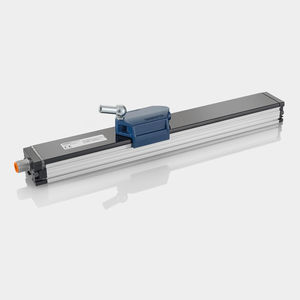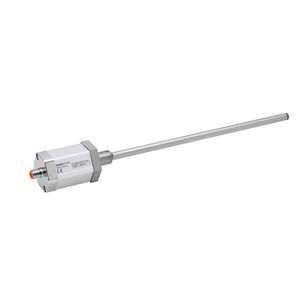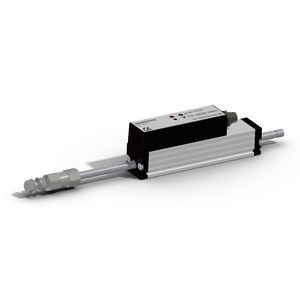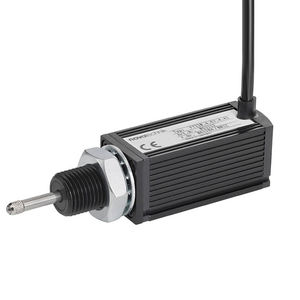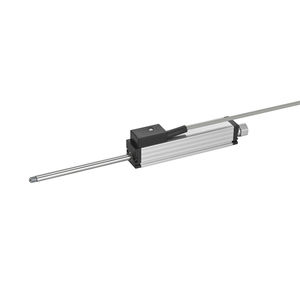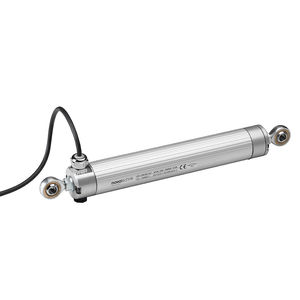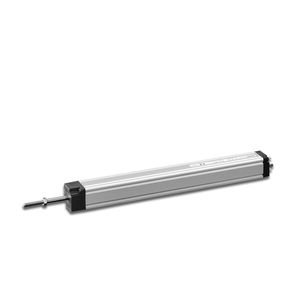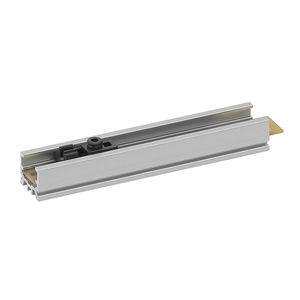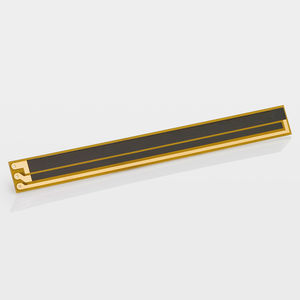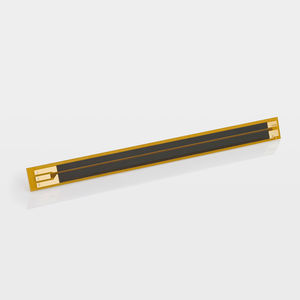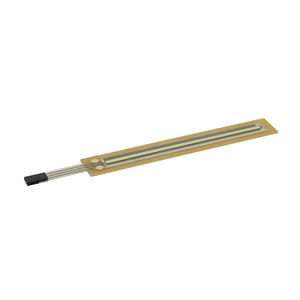
- Company
- Products
- Catalogs
- News & Trends
- Exhibitions
Linear position sensor TE1 conductive plastic potentiometeranalogIP40


Add to favorites
Compare this product
Characteristics
- Type
- linear
- Technology
- conductive plastic potentiometer
- Output signal
- analog
- Protection class
- IP40
- Other characteristics
- absolute, with integrated signal processing
- Measuring range
100 mm, 150 mm
(3.94 in, 5.91 in)
Description
Absolut transducer for precise measuring and control applications with integrated signal processing. Replaceable without new calibration.
The model with push rod and ball coupling enables a backlashand lateral force-free operation even with parallel and angulardisplacement of transducer and measuring direction.Characteristic for the robust design is the double-sided supportof the actuating rod. For the spring-loaded type, this bearingallows high lateral forces on the tip of the rod which may occurduring scanning of cams or wedge plates.The linear transducer with integrated signal processing(4 ... 20 mA or 0 ... 10 V) is connected directly to the analoginputs of the controller.
• Extremely compact design 18 x 18 mm
• Long life up to 100 million movements
• Outstanding linearity up to ±0.075 %
• Repeatability to ±0.002 mm
• Models with push rod or spring-loaded with internal return spring
• Actuating shaft with double-sided support
• Compatible to standard probe tips
• Insensitive to shock and vibration
• Optionally cable or plug connection
• Special ball-coupling eliminates lateral forces
• High operational speeds - up to 10 m/s
• Integrated signal processing for normalized output signals current or voltage
• Low temperature coefficient < 20 ppm/K
• Series T/TS TR/TRS without integrated signal processing in same design see separate data sheet
• Inductive series LS1 in same design see separate data sheet
Catalogs
Maincatalog Novotechnik
25 Pages
Related Searches
- Angular encoder
- Incremental encoder
- Incremental rotary encoder
- Absolute rotary encoder
- NOVOTECHNIK position sensor
- Industrial rotary encoder
- NOVOTECHNIK linear position sensor
- IP65 rotary encoder
- IP67 rotary encoder
- Displacement transducer
- Linear displacement transducer
- NOVOTECHNIK analog position sensor
- NOVOTECHNIK non-contact position sensor
- Robust rotary encoder
- Linear encoder
- NOVOTECHNIK magnetic position sensor
- Industrial position sensor
- Analog displacement transducer
- Analog rotary encoder
- NOVOTECHNIK IP67 position sensor
*Prices are pre-tax. They exclude delivery charges and customs duties and do not include additional charges for installation or activation options. Prices are indicative only and may vary by country, with changes to the cost of raw materials and exchange rates.



